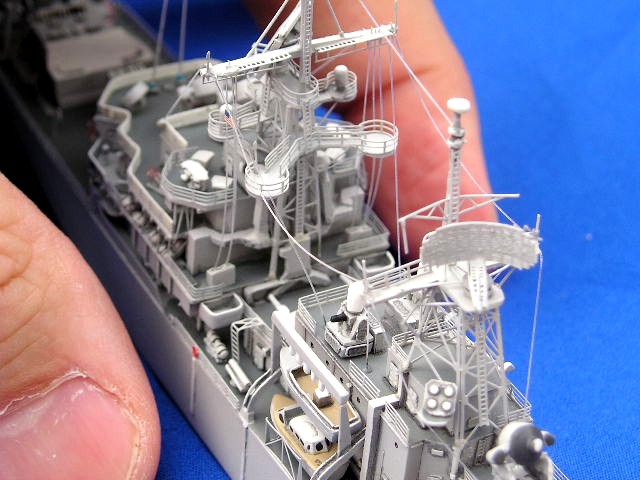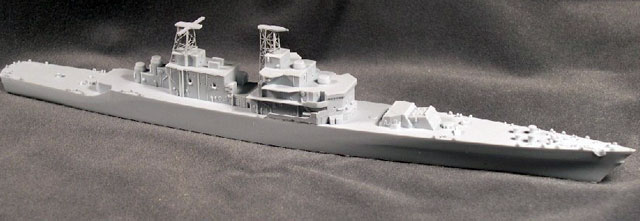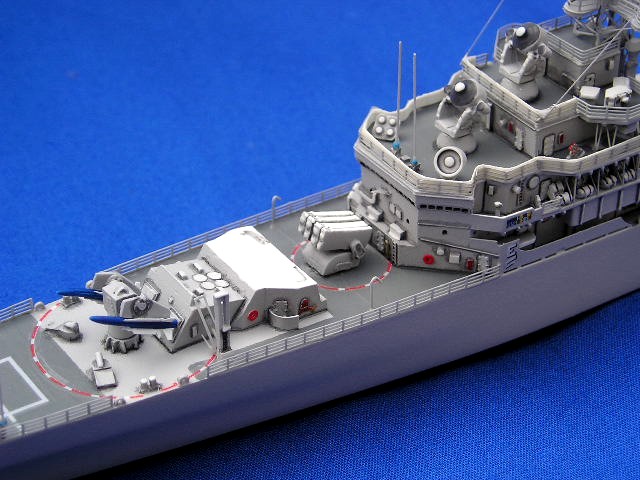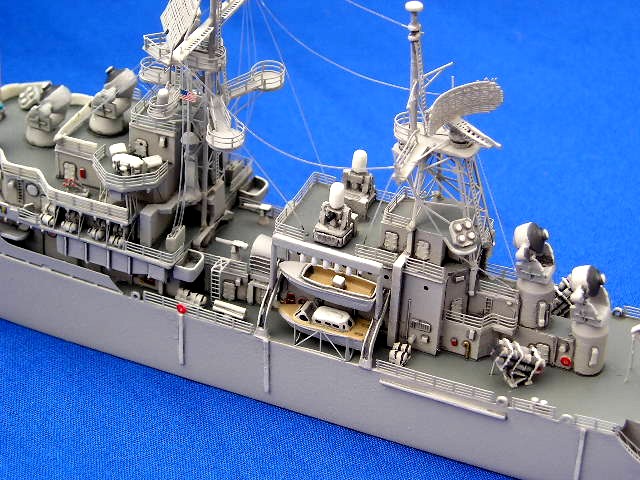|
The JAG 1/700 scale
USS Bainbridge
by
Peter Van Buren
|
 |
|
USS Bainbridge |

HyperScale is proudly supported by Squadron
If you enjoy inhaling resin dust, sanding off mold plugs, hacking
through crappy instruction sheets and filling in air bubbles, or love
someone who does, please stop reading now, as none of these apply to the
newest JAG kit, the 1/700 Bainbridge.
Quality Casting
JAG once again raises the bar for resin ship kits with a truly flawless
piece of molding for the main hull and superstructure. My commercial
product came out of the tube dead flat, with no pour stub, no bubbles
and no defects - I gave it a quick wash in dish detergent to remove mold
release agents and was ready to start construction. No face mask needed.
JAG also supplies most of the deck fittings as cast metal, which is very
easy to clean up with a sharp hobby knife.

The few resin parts were
relatively flash free and needed only a little work. Unlike the products
of some other makers, this kit comes out of its shipping container
largely ready to assemble. I have a family and a real job, and very much
appreciate the finished nature of a JAG kit.
Challenging Construction
Construction was challenging (in a good way), but sets this model aside
as not one for a beginner. The missiles, for example, have resin bodies,
PE fins (four per missile) and need then to be delicately attached to a
cast metal launcher arm. This requires some handy work with delicate
tweezers and successful gluing of resin, PE and cast parts. Same for the
Bainbridge's elaborate masts and radars-there are 30 parts for the
foremast right out of the box, and many of us will add PE railings,
rigging and other bits, all mixed media and very small and fragile.

The
pieces all fit well and the PE folds are straightforward right angles,
but require a steady hand. JAG recommends on the instructions that you
build the masts as separate, mini kits, and only attach them once
completed. I followed this advice, temporarily gluing the masts to a
small scrap of cardboard for ease of handling and painting, and only
gluing them to the superstructure at the very end of construction.
Use the Overhead Plans
Make good use of the 1/700 scale overhead and starboard side plan views
JAG provides to accurately place fittings on the ship, such as the
radars, Harpoons and the chaff dispensers. Keeping with the higher skill
level expected for this kit, no etched markings or indents are provided
to place these parts.
The upside is no etched markings or indents to file down or fill in.
Detail
Bulkhead detail on this ship is among the finest I have seen cast.
Though I added a few hatches here and there, I felt no need to replace
the molded on ladders, hoses and other details JAG provided.

The
crispness of the casting will really reward a modeler skillful with
his/her washes and highlighting.
With the Bainbridge, JAG has filled another Cold War niche in 1/700
scale, and has done it with a fine kit worthy of more experienced ship
modelers.
Well done and recommended!
Click the thumbnails below to view larger images:
Text, Images and Model Copyright 2004 by
Peter Van Buren
Page Created 15 November, 2004
Last Updated 15 November, 2004
Back to HyperScale
Main Page
|
Home
| What's New |
Features |
Gallery |
Reviews |
Reference |
Forum |
Search